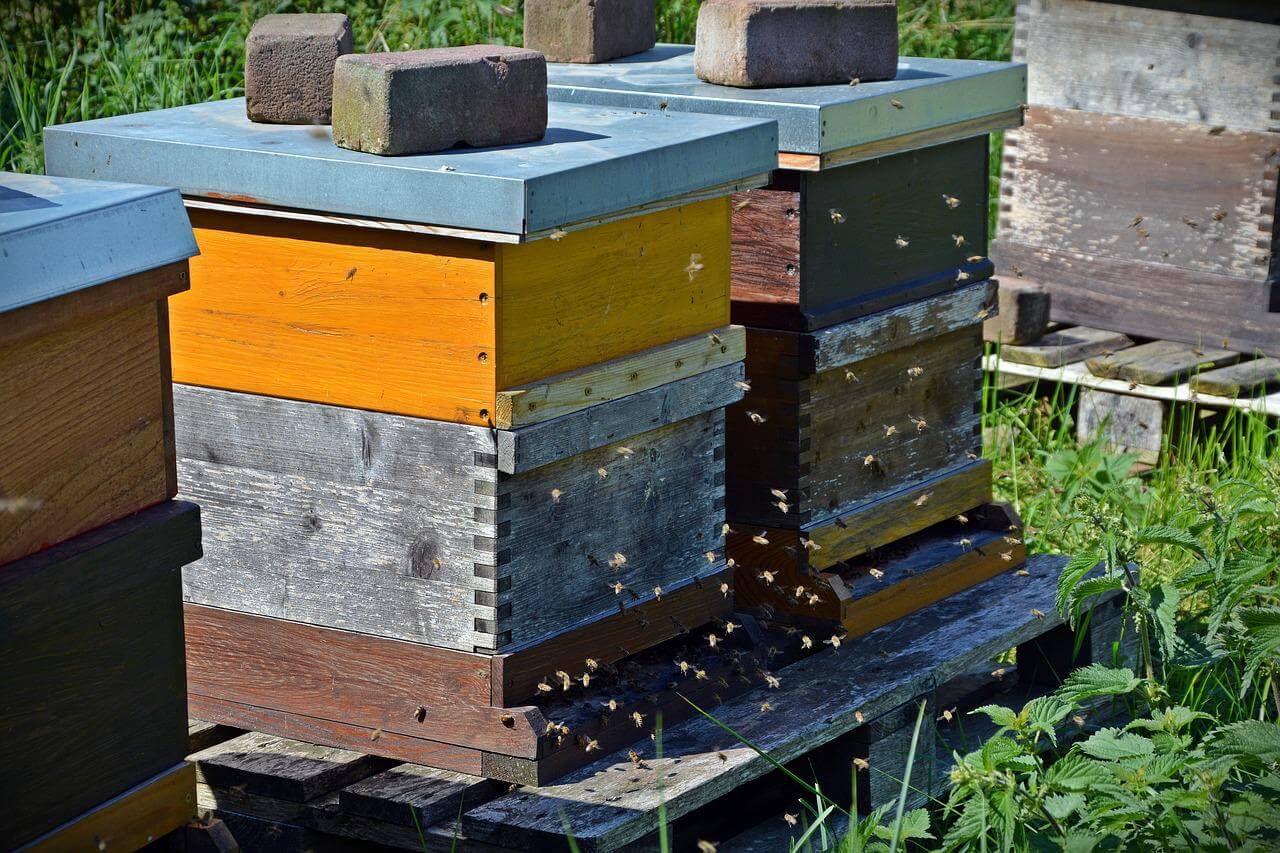How Much Money Can You Make Selling Honey
Did you know that the honey market is worth over $2 billion annually? If you’ve ever wondered how much money you can make selling honey, this article is for you.
Discover the factors that affect honey prices, learn how to calculate production costs, and explore strategies for maximizing profits.
Whether you’re a hobbyist beekeeper or considering starting a honey business, we’ll provide you with valuable insights and tips to help you succeed in the honey industry.
Key Takeaways: How Much Money Can You Make Selling Honey
- The honey market is worth over $2 billion annually.
- Differentiation and offering unique products are essential to stand out in the competitive honey market.
- Supply and demand, as well as the quality and purity of honey, play significant roles in determining honey prices.
- Maximizing profits and increasing profitability can be achieved through honey quality testing, organic honey certification, and producing value-added honey products.
The Honey Market: An Overview
If you’re wondering about the current state of the honey market, you’ll be pleased to know that it is a thriving industry with plenty of opportunities for profit.
Honey market trends show a growing demand for organic and locally-sourced honey, as consumers become more health-conscious and interested in supporting sustainable agriculture. This presents a great opportunity for beekeepers and honey producers to tap into this lucrative market.
However, it’s important to note that there is also stiff honey market competition. With the rising popularity of honey products, more players are entering the market, vying for a piece of the pie. This means that it’s essential for honey sellers to differentiate themselves and offer unique products to stand out from the competition.
Now, let’s explore the factors affecting honey prices and how they can impact your profitability.
Is there Money In Beekeeping
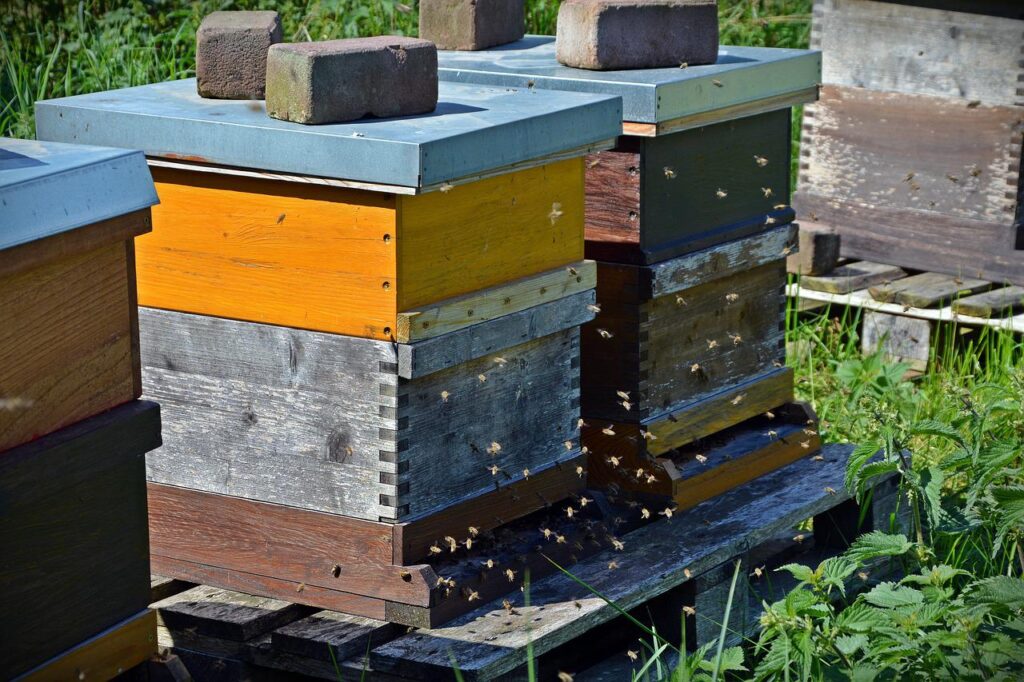
Here is the short answer: Yes! There is money to be made in beekeeping if you do it right!
The key to how to make money beekeeping is to provide a product or service that people want or need. When it comes to selling honey, there are a few things you can do to ensure that you are providing a product that people will love.
It is important to choose the right honey to sell. There are many different types of honey, each with its own unique flavor and health benefits. Do some research to find out which type of honey is most popular in your area. You can also talk to local beekeepers or visit farmers markets to get an idea of what type of honey is in demand.
Once you have chosen the right honey to sell, you need to make sure that you are marketing your business correctly. There are a few ways to do this. You can start by creating a website or blog where you can share information about your business and the honey you sell. You can also distribute flyers and business cards in local businesses. And you should always talk to people about your business!
If you keep on reading you will get the information you need to be well on your way to making money by selling honey. Just remember to provide a product that people want or need and market your business correctly, and you will be successful!
Now to the real question, can you make money beekeeping and how much money can you make selling honey?
How Much Honey Can One Beehive Produce?
The amount of honey a beehive can produce is dependent on various factors such as the climate, the length of the growing season, the availability of flower sources, and the size and productivity of the bee colony. On average, a single beehive can produce approximately 25 pounds (11 kg) of surplus honey in a season. However, in ideal conditions, with a well-established and productive colony, a beehive can potentially produce 60 pounds (27 kg) or more of honey in a single season.
It’s important to note that the amount of honey produced by a beehive can vary greatly from year to year, depending on environmental conditions and the health of the bee colony. Additionally, a portion of the honey produced by the bees is typically left in the hive to sustain the colony through winter and early spring.
For example: if a beekeeper has ten hives and each produces an average of 25 pounds (11 kg) of surplus honey per season, they could potentially produce 250 pounds (113 kg) of honey per year. At a retail price of $10 per pound, this would result in a total of $2,500 in honey sales. However, it’s worth noting that these figures are rough estimates and will vary based on many factors.
How Much Money Can You Make Selling Honey
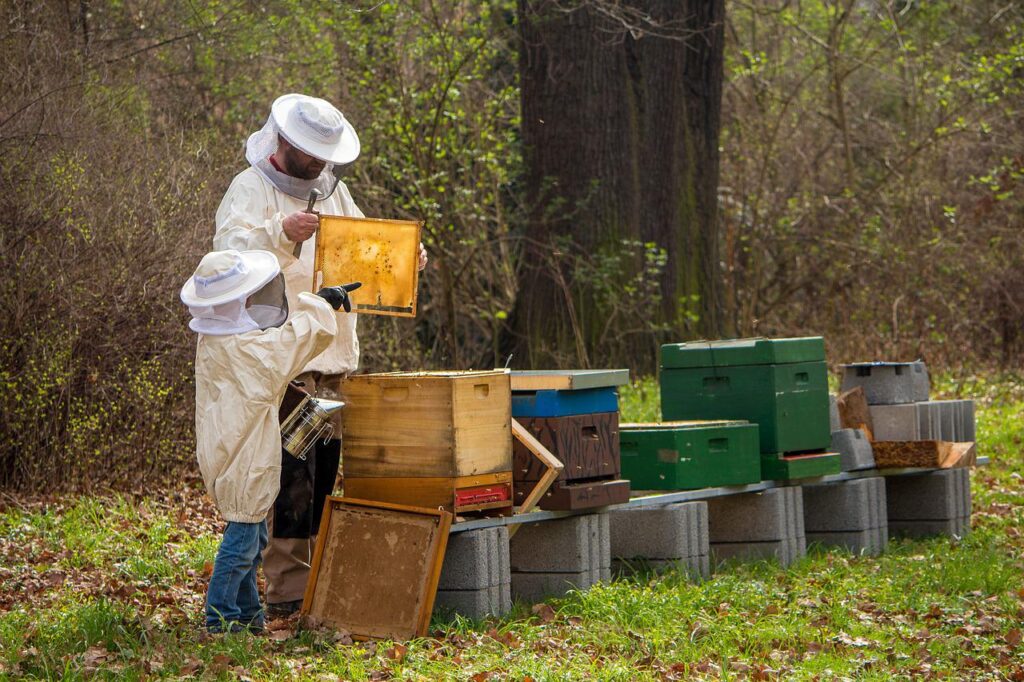
So how much money can you make selling honey? Well prices depends on if you want to sell for wholesale prices or retail prices so here are the prices for each of the two.
Honey prices are $5.50 to $6.50 per pound, $12.1 to $14.30 per kg wholesale.
But in retail the prices are $8.50 to $10.50 per pound, $18,7 to $31,46 per kg.
Short answer:
If one hive produces 11-27 kg (25-60lb) you can earn between $133 to $386 per year.
Longer answer:
This is quite a difficult question to answer because it depends on a lot of factors, such as how much honey you sell and what price you sell it at. But I will do my best to answer it in an easy way and show you that selling honey can be a great way to earn some extra cash!
Here are my general guidelines. If you are just starting out a new hive costs around $150, clothing and gear cost about $150 so the startup cost is $300. So let’s say your honey bees produce 11kg each season it will take 1 year for each hive to pay itself off.
Of course, there are many ways to increase your profits, such as selling honeycomb or beeswax along with your honey. You can also sell other products made from honey, like candles or soaps. And, if you have a large amount of honey to sell, you can always wholesale it to local stores or online retailers.
No matter how you choose to sell your honey, remember that the key to making money with honey bees is providing a product that people want or need and marketing your business correctly.
So if you are going to give this a go and after a while and find it fun, think about scaling it with more beehives.
How Much Is Honey Worth?
Honey is worth a lot of money. A lot of people don’t know this, but honey is one of the most expensive liquids in the world. A pound of honey can cost upwards of $30 if it’s organic and you have some exclusiveness to it, making it one of the most valuable commodities on the planet.
Why is Honey So Expensive?
It actually takes a lot of work to produce honey. Bees have to fly miles and miles to collect nectar from flowers, which they then turn into honey. Second, honey is very versatile and has many uses such as a sweetener, in skincare products, and even as medicine. And there is a limited supply of honey!
Beekeepers can only produce so much honey each year, making it a rare and valuable commodity.
If you are thinking about selling honey, remember that you are selling a product that is in high demand and short supply. You can charge a premium price for your honey and make a lot of money if you market your business correctly.
Factors Affecting Honey Prices
When it comes to understanding the factors affecting honey prices, there are a few key points to consider.
First, supply and demand play a significant role in determining the market value of honey.
Second, the quality and purity of the honey can greatly impact its price, with consumers typically willing to pay more for higher quality products.
Lastly, packaging and branding also contribute to the perceived value of honey, as attractive and well-designed packaging can make a product more appealing to consumers.
Supply and Demand
The price of honey can fluctuate depending on the current supply and demand. Here’s what you need to know about how these factors can impact the market trends:
- Supply: The amount of honey available in the market directly affects its price. If there is a shortage of honey due to factors like bad weather or disease affecting bees, the price is likely to increase. On the other hand, if there is an abundant supply of honey, the price may decrease.
- Demand: The demand for honey can be influenced by various factors such as consumer preferences, health trends, and the availability of alternative sweeteners. Higher demand for honey will lead to an increase in price, while lower demand may result in a decrease.
- Market trends: The honey market can be influenced by global trends and events. For example, if there is an increased interest in natural and organic products, the demand for honey may rise, leading to higher prices.
Understanding the dynamics of supply and demand in the honey market is crucial for anyone looking to sell honey and make a profit. However, it’s not just about the price. The quality and purity of your honey also play a significant role, as we will explore in the next section.
Quality and Purity
Understanding the importance of quality and purity is crucial for anyone looking to sell honey and ensure its marketability. When it comes to honey, consumers expect a product that is pure, natural, and free from any adulteration.
Honey testing plays a vital role in confirming the quality and purity of the product. By conducting tests, you can identify any potential adulteration or contamination, ensuring that your honey meets the highest standards.
Honey adulteration is a growing concern in the industry, with some unscrupulous sellers diluting honey with cheaper ingredients or adding artificial sweeteners. By investing in honey testing, you can protect your reputation as a seller and provide customers with a genuine, high-quality product.
Packaging and Branding
Packaging and branding are essential for creating a visually appealing product that stands out on store shelves. When it comes to honey packaging trends, there are several strategies you can use to differentiate your brand and attract customers.
- Eco-friendly packaging options, such as glass jars or recyclable materials, can appeal to environmentally-conscious consumers.
- Unique label designs and colors can catch the eye and make your product memorable.
- Including information about the source of your honey, such as the specific flowers or regions, can appeal to customers looking for a specific taste or experience.
By incorporating these brand differentiation strategies, you can create a honey packaging that not only looks great but also tells a story and sets your product apart from the competition.
Don’t underestimate the power of packaging and branding in attracting customers and building a successful honey business.
Calculating the Cost of Honey Production
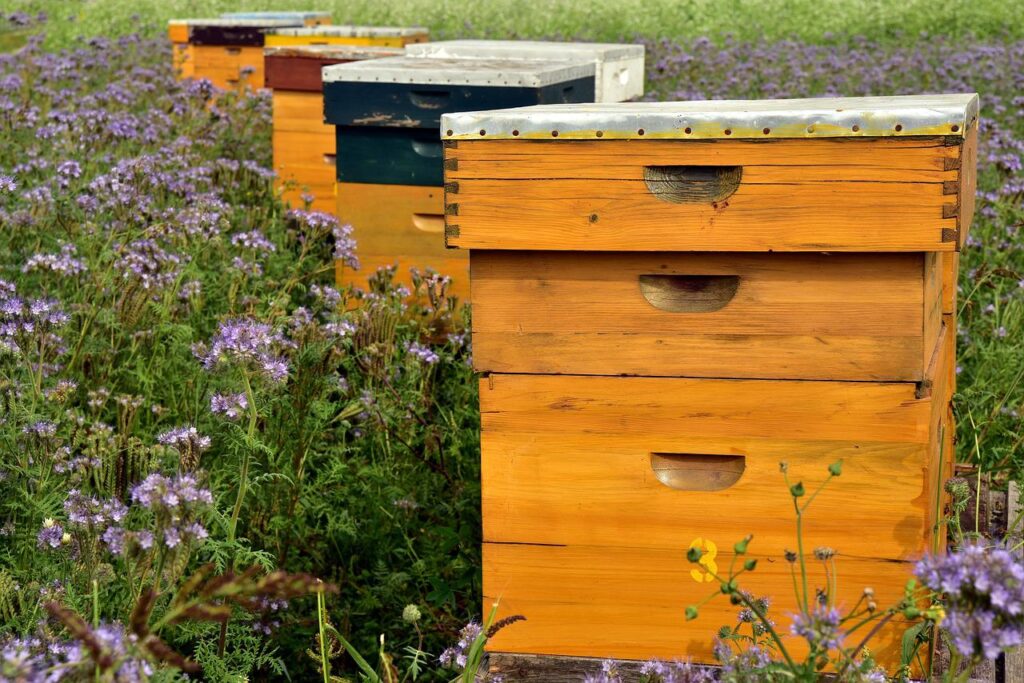
To calculate the cost of honey production, you’ll need to consider factors such as equipment, labor, and beekeeping supplies. Conducting a cost analysis is essential to determine the expenses involved in producing honey.
Start by evaluating the cost of purchasing or maintaining beekeeping equipment, such as hives, frames, and protective gear.
Next, factor in the cost of labor, including the time and effort spent on tasks like hive maintenance, honey extraction, and packaging.
Additionally, consider the expenses associated with beekeeping supplies like feed, medications, and pest control.
Setting a Profit Margin for Honey Sales
When it comes to pricing your honey for profit, there are several key considerations to keep in mind.
First, you need to develop effective pricing strategies that will maximize your profits while still remaining competitive in the market.
Second, conducting a thorough cost analysis is essential in order to accurately determine the pricing of your honey.
Lastly, it’s crucial to take into account your competitors’ pricing strategies and adjust your own accordingly to stay competitive and attract customers.
Pricing Strategies for Profit
If you want to maximize your profit, you should consider implementing effective pricing strategies for selling honey. Pricing your honey correctly is crucial for attracting customers and making a profit.
Here are some strategies to help you set the right price and analyze your profit:
- Research the market: Understand the current market trends and pricing for honey. This will give you an idea of what customers are willing to pay and help you set a competitive price.
- Consider your costs: Calculate all the expenses involved in producing your honey, including labor, packaging, and marketing. Use this information to determine the minimum price you need to cover your costs and make a profit.
- Analyze your profit margins: Evaluate your profit margins for different pricing options. Experiment with different prices to see how they impact your overall profitability.
Cost Analysis and Pricing
Evaluate your production expenses, such as labor, packaging, and marketing, to determine the minimum price needed for profitability. Conduct a cost analysis to understand how much it costs you to produce each unit of honey. Consider the cost of raw materials, equipment, utilities, and any other expenses directly associated with production.
This analysis will give you a clear picture of your production costs and help you set a competitive price for your honey. Additionally, market research is crucial in determining the demand for your product and the prices customers are willing to pay. Look at similar products in the market and analyze their pricing strategies.
Competitor Pricing Considerations
Analyzing competitor pricing is crucial to understanding the market and setting a competitive price for your honey. By conducting a competitor analysis, you can gain valuable insights into how other honey producers are pricing their products, allowing you to make informed decisions about your own pricing strategy.
Here are three key considerations when analyzing competitor pricing:
- Product differentiation: Take note of how your competitors are positioning their honey products in the market. Are they offering any unique features or benefits that set them apart from the rest?
- Target market: Determine who your competitors are targeting with their pricing strategies. Are they catering to a specific demographic or are they trying to appeal to a broader audience?
- Value proposition: Evaluate the perceived value of your competitors’ products based on their pricing. Are they offering a premium product at a higher price point, or are they focusing on affordability?
By understanding these factors, you can develop a pricing strategy that aligns with your target market and offers a competitive edge.
Transitioning into the subsequent section about marketing strategies for selling honey, it’s important to consider how your pricing strategy ties into your overall marketing approach.
Marketing Strategies for Selling Honey
When it comes to marketing strategies for selling honey, you should consider using social media platforms to reach a wider audience.
Online marketing is a powerful tool that allows you to showcase your brand and connect with potential buyers. By leveraging social media, you can create engaging content that highlights the unique qualities of your honey and attracts customers.
Utilize branding techniques such as creating a distinctive logo and using consistent messaging to establish a strong brand identity.
Additionally, take advantage of social media features like hashtags and influencers to increase visibility and generate buzz around your product.
Engage with your audience by responding to comments and inquiries promptly, fostering a sense of trust and credibility.
With the right online marketing strategies, you can effectively promote your honey and boost sales.
Selling Honey Locally Vs. Online
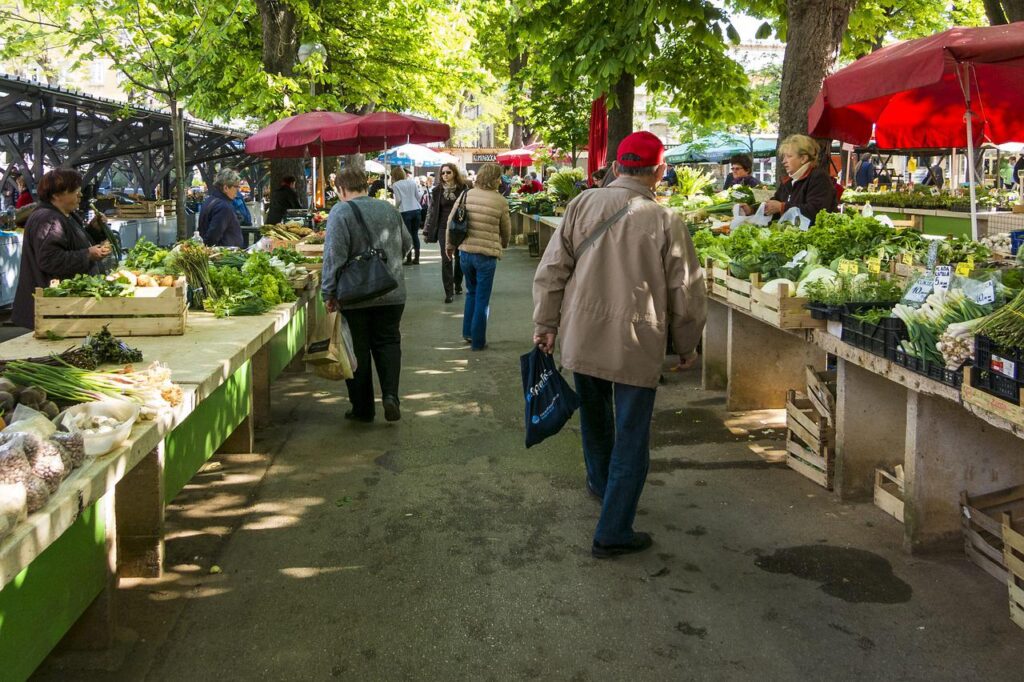
When it comes to selling honey, you may be wondering whether it’s better to sell locally or online.
Let’s discuss the key points of local versus online sales, including profitability and accessibility.
You’ll learn about the advantages and disadvantages of each approach, and how to make the most informed decision for your honey business.
Local Vs. Online Sales
Selling honey online can be more profitable than selling locally. Here’s why:
- Local vs. Online Sales:
- Online sales allow you to reach customers beyond your local area, expanding your customer base and potential sales.
- Selling locally limits your market reach to only those in your immediate vicinity, limiting your sales potential.
- With online sales, you can tap into a global market, reaching customers from all over the world.
- Customer Preferences:
- Many customers prefer the convenience of shopping online, allowing them to browse and purchase honey from the comfort of their own homes.
- Online platforms also offer easier access to customer reviews and ratings, which can boost consumer confidence in your product.
- Market Reach:
- Online sales platforms provide the opportunity for targeted marketing and advertising, allowing you to reach a larger audience of honey enthusiasts.
- With online sales, you can also participate in online marketplaces and platforms dedicated to honey sales, further expanding your market reach.
Overall, selling honey online offers greater profit potential due to the wider market reach, customer preferences for online shopping, and the ability to tap into a global audience.
Profitability and Accessibility
Selling honey online allows for greater accessibility, reaching customers worldwide and potentially increasing profitability.
When analyzing your profit margin, it is important to consider the marketing techniques that will attract customers and maximize sales. Online platforms provide you with various tools to promote your honey products, such as social media advertising, search engine optimization, and targeted email campaigns. By using these techniques effectively, you can reach a larger audience and increase your chances of making sales.
Additionally, selling honey online eliminates the costs associated with physical store locations, reducing overhead expenses and potentially boosting your profit margin. It also allows you to easily track and analyze sales data, enabling you to make data-driven decisions to optimize your pricing and marketing strategies.
With the right approach, selling honey online can be a profitable venture.
Building a Customer Base for Honey Sales
To build a customer base for your honey sales, you’ll want to focus on networking and word-of-mouth referrals. Here are some strategies to help you get started:
- Offer incentives for customer referrals: Provide discounts or free samples to customers who refer others to your honey business. Encourage satisfied customers to leave reviews or testimonials on your website or social media pages.
- Utilize online advertising: Create a professional website to showcase your honey products and provide a convenient platform for customers to place orders. Use targeted online ads on platforms like Facebook or Instagram to reach potential customers who may be interested in purchasing honey.
- Prioritize customer retention: Provide excellent customer service and respond promptly to any inquiries or concerns. Offer loyalty programs or discounts for repeat customers to encourage their continued support.
Scaling Up Honey Production for Higher Profits
Scaling up honey production can lead to higher profits for your business. By implementing effective scaling techniques and optimizing your honey production methods, you can increase your output and meet the growing demand for honey in the market.
One scaling technique is expanding your bee colonies by adding more hives and increasing the number of bees. This will result in a larger honey production capacity. Additionally, investing in modern equipment and technology can streamline your production process, saving you time and labor costs.
You can also explore partnerships with other local beekeepers to pool resources and share knowledge, enabling you to produce more honey collectively.
Honey Packaging and Labeling Tips
When packaging and labeling your honey, it’s important to ensure that the information on the label accurately reflects the quality and origin of the product. Here are some tips to help you with honey packaging and labeling:
- Honey packaging design:
- Choose a container that is suitable for honey, such as glass jars or food-grade plastic bottles.
- Consider using labels with attractive designs that appeal to customers.
- Include necessary information on the packaging, such as the weight, ingredients, and nutritional facts.
- Honey labeling regulations:
- Familiarize yourself with the labeling regulations in your country or region to avoid any legal issues.
- Ensure that the label includes the correct information regarding the honey’s origin and any certifications it may have.
- Follow any specific requirements for language or font size on the label.
By following these tips and adhering to honey labeling regulations, you can effectively package and label your honey to attract customers and provide them with accurate information about your product.
Now, let’s dive into the next section about honey quality standards and certification.
Honey Quality Standards and Certification
Now that you know how to package and label your honey, it’s important to understand the quality standards and certifications associated with it.
When it comes to honey, quality is crucial. To ensure that your honey meets the highest standards, honey quality testing is essential. This involves analyzing various factors such as moisture content, acidity, and pollen count. By conducting these tests, you can guarantee that your honey is of the finest quality.
Additionally, if you want to market your honey as organic, obtaining organic honey certification is a must. This certification ensures that your honey has been produced without the use of synthetic pesticides or antibiotics. It adds value to your product and appeals to health-conscious consumers who prefer organic options.
Maximizing Profits: Value-added Honey Products
Creating value-added honey products, such as flavored honey spreads or honey-infused skincare items, can significantly boost your profits. By diversifying your honey offerings and tapping into different markets, you can increase your customer base and attract new buyers.
Here are three key benefits of producing value-added honey products:
- Higher profit margins: Value-added products often command higher prices, allowing you to earn more from each sale.
- Differentiation: Unique honey products can set you apart from competitors and attract customers looking for something new and exciting.
- Expanding market reach: By creating different honey products, you can cater to a wider range of consumers, including those who may not typically buy raw honey.
Investing in value-added honey products can be a smart strategy for increasing profitability and growing your honey business.
Conclusion
Congratulations! You’ve unlocked the sweet potential of selling honey. Just like bees work together to create their golden masterpiece, you too can create a thriving business.
By understanding the factors that affect honey prices, calculating production costs, and setting a profitable margin, you can maximize your profits.
With clever marketing strategies, scaling up production, and packaging tips, you’ll be buzzing with success.
Remember, honey represents nature’s bounty and your determination. So, go out there and let your profits flow like liquid gold!
Related:

